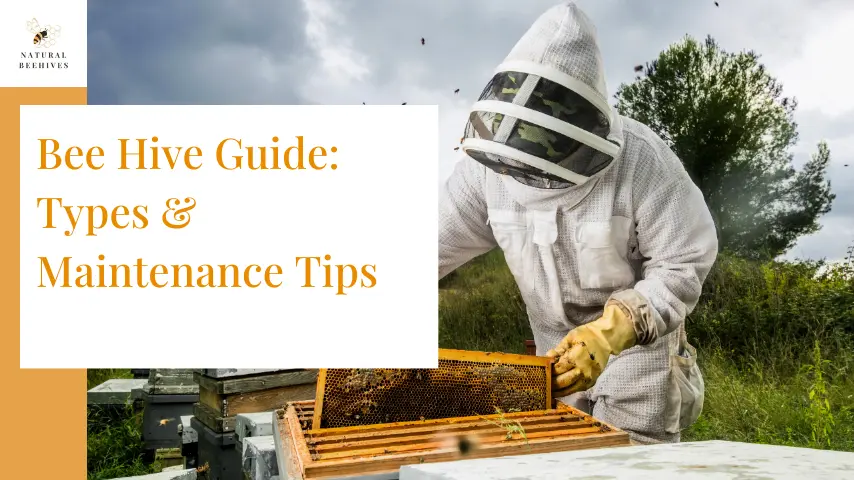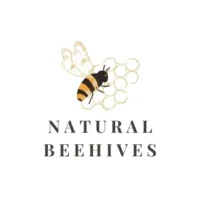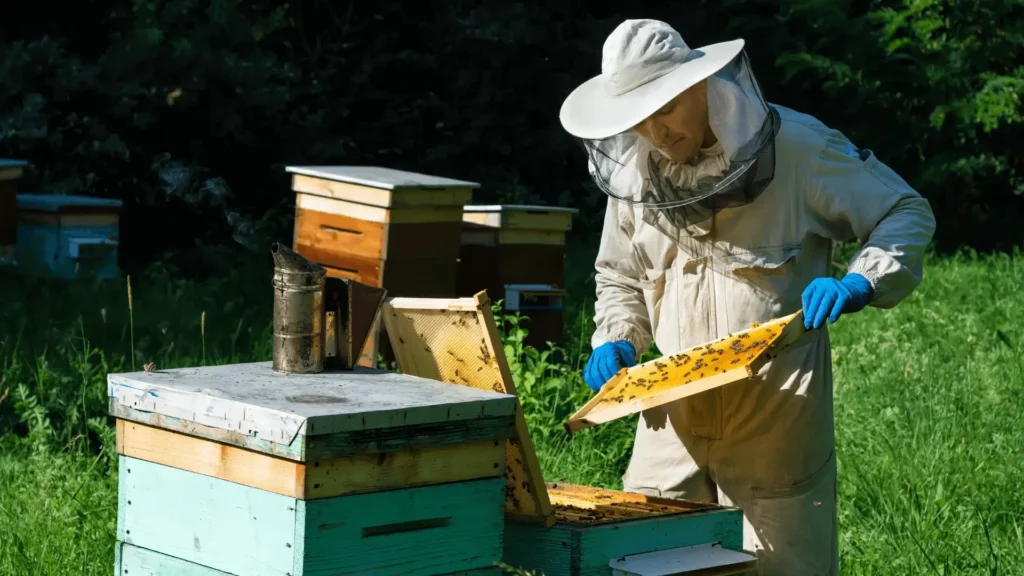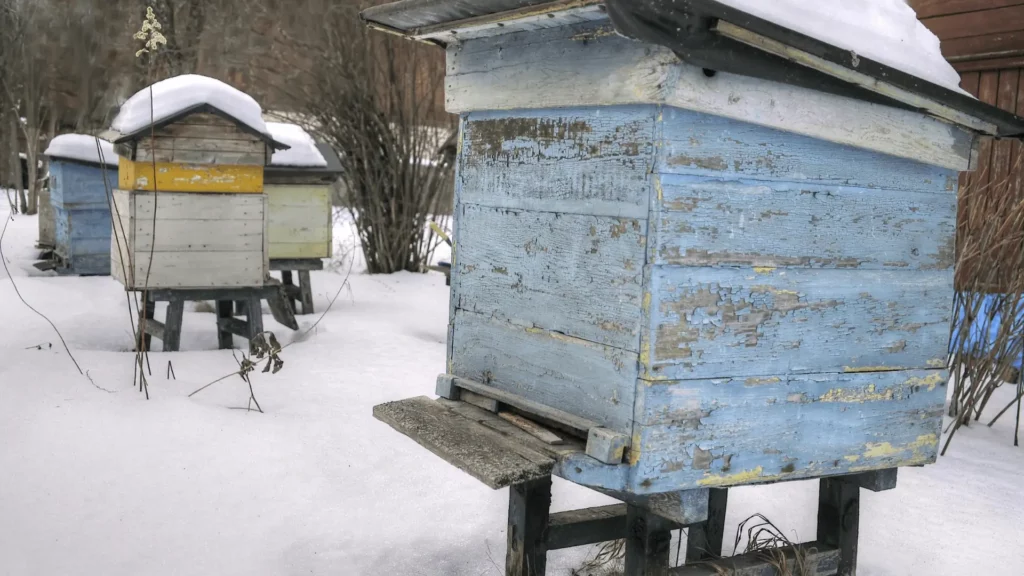
Beekeeping dates back centuries, with bee hives playing a vital role in agriculture and ecosystem health. Beekeepers understand the significance of maintaining healthy hives to ensure pollination and honey production. These dedicated individuals work tirelessly to safeguard bee populations and harvest quality honey. Beekeeping practices have evolved over time, incorporating modern techniques while respecting traditional methods. Today, beekeepers continue to uphold the essential role of bee hives in sustaining our environment and food supply.
Key Takeaways
Understanding Bee Hives
Main Components
Bee hives consist of several bees, a queen bee, worker bees, and drones. The hive includes frames, foundation, and supers for honey storage.
The frames hold the bees wax comb where bees raise brood and store honey. The foundation provides a base for bees to build their comb.
Purpose of Different Hive Sections
The bottom board serves as the hive’s entrance and landing platform for bees. The brood chamber houses the queen and developing brood, while supers store surplus honey.
The inner cover separates the hive body from the outer cover, providing ventilation. The outer cover protects the hive from the elements.
Role of Bees in Hive Activities
Bees play crucial roles in maintaining the hive. Worker bees collect nectar, pollen, water, and propolis. They also tend to the queen, care for larvae, and defend the hive.
Worker bees perform waggle dances to communicate food sources’ locations. Drones mate with virgin queens outside the hive.
Exploring Innovative Hive Types
Flow Hive 2+
Flow Hive 2+ offers advanced features for beekeepers, including a modified mechanism for honey extraction. The hive’s design allows beekeepers to harvest honey without disturbing the bees significantly. With the addition of Bluetooth technology, monitoring the hive’s activity becomes more accessible.
The Flow Hive 2+ stands out with its upgraded features, making it an ideal choice for experienced beekeepers looking for convenience and efficiency. The hive’s enhanced honey harvesting system simplifies the extraction process, reducing stress on both the bees and the beekeeper.
Flow Hive 2
Flow Hive 2 is a popular choice among beekeepers due to its user-friendly design and innovative honey extraction method. This hive enables beekeepers to collect honey by simply turning a key, eliminating the need for traditional methods that can be disruptive to the bees.
Beekeepers find the Flow Hive 2 appealing for its simplicity and ease of use. By incorporating a straightforward honey harvesting process, this hive reduces the labor-intensive tasks associated with traditional beekeeping methods.
Flow Hive Classic
Flow Hive Classic maintains a traditional appearance while incorporating modern technology for honey extraction. This hive appeals to beekeepers seeking a blend of conventional aesthetics and innovative functionality. The classic design adds a charming touch to any apiary.
The Flow Hive Classic combines nostalgia with practicality, offering beekeepers a visually appealing option that does not compromise on efficiency. Its seamless integration of traditional and modern elements makes it a versatile choice for various beekeeping preferences.
Flow Hive Hybrid
Flow Hive Hybrid combines the best features of traditional hives with modern advancements. This hybrid model caters to beekeepers who appreciate the benefits of both conventional and innovative hive designs. It provides flexibility in managing bee colonies while optimizing honey production.
Beekeepers value the Flow Hive Hybrid for its adaptability and versatility, allowing them to customize their beekeeping approach according to individual needs. The hybrid design offers a balanced solution that harmonizes traditional practices with contemporary convenience.
Benefits of Using Flow Hive Bundles for New Beekeepers
Choosing the Right Hive
Materials Consideration
When selecting a bee hive, Beekeepers should consider the materials used. Traditional complete hive kits are typically made of wood, offering durability and insulation. On the other hand, Flow Hives are constructed with food-grade plastic, providing easy visibility into the hive.
Wooden hives are known for their excellent insulation properties, helping regulate temperature fluctuations within the hive. However, plastic hives such as Flow Hives offer the advantage of being lightweight and easier to maintain.
Experience Level Matching
Beekeepers must match hive types to their experience levels. Traditional complete hive kits are ideal for beginners due to their simplicity and ease of use. In contrast, Flow Hives cater more towards experienced beekeepers who want a more modern and convenient option.
For novice Beekeepers, starting with a traditional complete hive kit allows them to grasp the basics of beekeeping without overwhelming complexity. Advanced Beekeepers, on the other hand, may prefer the innovation and efficiency that Flow Hives offer.
Pros and Cons Comparison
Comparing the pros and cons of different Flow Hive options is crucial. While Flow Hives provide the convenience of harvesting honey without disturbing bees, they can be more expensive than traditional hive kits. Some Beekeepers argue that Flow Hives may not replicate the natural comb-building process as effectively as traditional hives.
Pros:
Cons:
RELATED: Bee Nest Types: Unraveling the Fascinating Diversity of Bee Homes
Essential Tools for Beekeeping
Beekeeping Suits
Beekeepers wear protective beekeeping suits to shield themselves from bee stings. These suits consist of a veil, jacket, and pants made of thick material. The significance of these suits lies in preventing bee stings, which can cause discomfort and allergic reactions. The suits provide a sense of security for beekeepers, allowing them to work confidently around their hives.
Smoker
A smoker is a crucial tool in a beekeeper’s arsenal. By emitting cool smoke, it helps in calming the bees during hive inspections or honey harvesting. The smoke disrupts the bees’ communication signals, making them less aggressive and more manageable. This tool plays a vital role in ensuring the safety of both the bees and the beekeeper.
Other Essential Tools
Beekeepers rely on these tools to ensure smooth operations within their apiaries. Each tool serves a specific purpose, contributing to the overall success of the beekeeping venture.
Setting Up Your Hive
Assembling Flow Hive
To assemble a Flow Hive, start by constructing the brood box and adding frames for the bees to build their comb. Next, place the super on top, ensuring it is level and secure.
Once the super is in place, insert the Flow Frames according to the manufacturer’s instructions. These frames allow for easy extraction of honey without disturbing the bees.
Proper Placement
When placing your hive, choose a location that receives morning sun and has some shade in the afternoon. Ensure the hive entrance faces east or south to protect it from harsh winds.
Avoid placing the hive in low-lying areas prone to flooding and ensure there is a water source nearby for the bees. Make sure the hive is easily accessible for routine inspections and maintenance.
Importance of Ventilation
Proper ventilation is crucial for maintaining a healthy hive. Bees regulate the temperature inside the hive by fanning their wings, so adequate airflow is essential.
To ensure proper ventilation, consider installing screened bottom boards or upper entrances to facilitate air circulation. This helps prevent moisture buildup and reduces the risk of mold and disease within the hive.
Pros of Flow Hive Assembly:
Cons of Improper Hive Placement:
Steps for Hive Placement:
Key Points for Ventilation:
Maintaining Your Hive
Regular Inspections
Beekeepers should conduct frequent inspections of their hives to ensure the overall health and productivity of the colony. These inspections involve checking for signs of a thriving hive, such as a well-laying queen, sufficient brood patterns, and ample food storage.
Regular inspections also allow beekeepers to detect early signs of issues like diseases or pests, enabling them to take prompt action to prevent widespread infestations or infections. By staying proactive through routine inspections, beekeepers can maintain a healthy environment for their bees.
Routine Maintenance
Regular maintenance tasks are essential for keeping a bee hive in optimal condition. Beekeepers should focus on activities like cleaning the hive components, replacing old frames, and ensuring proper ventilation within the hive.
Maintaining the hive structure is crucial for the bees’ well-being and productivity. It provides them with a clean and organized living space, minimizing stress and promoting a conducive environment for honey production.
Addressing Common Issues
When faced with common hive issues such as pests or diseases, beekeepers need to act swiftly to protect their colony. Implementing integrated pest management strategies can help control pests without harming the bees or the environment.
For diseases, beekeepers should be familiar with the symptoms of common ailments like American foulbrood or varroosis. They must have a treatment plan in place to address these issues effectively while safeguarding the overall health of the hive.
RELATED: Bee Hive Beetles: Identification, Life Cycle, And Control Methods
Harvesting Honey
Flow Hive
Beekeepers utilize Flow Hive technology for honey harvesting, a system that simplifies the extraction process. This innovative technology allows beekeepers to harvest honey without disturbing the bees significantly. By inserting a key into the hive and turning it, beekeepers can watch as honey flows out of the hive frames.
The benefits of using Flow Hive for easy honey extraction are abundant. Firstly, it reduces stress on the bees since there is minimal disruption during the harvesting process. This leads to healthier and calmer bees, ultimately resulting in increased honey production. It saves time and effort for beekeepers, making the extraction process more efficient.
Sustainable Practices
To ensure sustainable honey harvesting, beekeepers must follow certain best practices. One crucial aspect is to harvest honey responsibly, leaving enough for the bees to survive through winter. This practice ensures the well-being of the colony and promotes long-term sustainability in beekeeping operations.
Maintaining a healthy environment around the hive is also essential for sustainable honey harvesting. Beekeepers should plant diverse flowers and plants to provide a varied source of nectar for the bees. This not only benefits the bees but also enhances the quality and flavor of the harvested honey.
Furthermore, beekeepers should regularly monitor their hives for signs of disease or pests to prevent any issues that could affect the bees’ health or honey production. Implementing integrated pest management strategies can help maintain a healthy hive without relying heavily on chemical treatments.
RELATED: Bee Swarm vs. Supersedure Cells: Master Queen Cell Management in Your Beehive [Expert Guide]
Beekeeping Safety Gear
Protective Equipment
Beekeepers prioritize safety by wearing beekeeping gear to prevent stings and injuries. The essential protective equipment includes a high-quality beekeeping suit, gloves, and a veil.
While harvesting honey, beekeepers face the risk of bee stings, making protective gear crucial. Beekeeping suits provide full-body protection with thick material that prevents bees from penetrating the fabric.
Features of Quality Suits
High-quality beekeeping suits are made of durable, breathable material to ensure comfort during long hours in the apiary. These suits feature elastic cuffs and ankles to seal off any openings for bees to enter.
The veil attached to the suit offers protection for the face and neck, crucial areas prone to bee stings. It allows beekeepers to maintain visibility while safeguarding against potential harm.
Importance of Gloves
Beekeeping gloves are another vital component of safety gear, shielding hands from stings and propolis. They are typically made of leather or canvas, providing flexibility and dexterity for handling beehives.
Wearing gloves not only protects beekeepers from stings but also prevents transferring human scents to the hive, reducing agitation among bees. This enhances overall safety and efficiency during hive inspections.
Benefits of Veils
A veil acts as a barrier between a beekeeper’s face and aggressive bees, significantly reducing the risk of facial stings. It allows beekeepers to work confidently without fear of getting stung on sensitive areas.
RELATED: Revolutionize Bee Feeding: 7 Reasons Why the Bucket Bee Raft Is a Game-Changer for Beekeepers
Common Questions Answered
Hive Frames
Beekeepers often wonder about the frames used in beehives. These frames are essential components that hold the honeycomb where bees store honey and raise their brood. They provide structure and organization within the hive, making it easier for beekeepers to inspect and manage their colonies.
The frames come in various sizes, with the most common being the deep, medium, and shallow frames. Deep frames are typically used for brood chambers, while medium and shallow frames are ideal for honey storage. Beekeepers can choose the frame size based on their specific needs and preferences.
Frame Maintenance
Proper maintenance of frames is crucial for a healthy hive. Beekeepers should regularly inspect frames for signs of damage or disease. Damaged frames should be replaced promptly to ensure the colony’s well-being. It’s recommended to rotate frames periodically to prevent comb build-up and encourage even distribution of resources within the hive.
To maintain frames, beekeepers can use a hive tool to carefully pry them apart for inspection. Any excess propolis or wax buildup should be scraped off to facilitate easy removal and inspection. Regular cleaning and maintenance help prolong the lifespan of frames and promote a hygienic environment for the bees.
Upgrading Frames
As beekeepers gain experience, they may consider upgrading their frames to improve hive efficiency. One popular upgrade is switching to plastic frames, which are durable, easy to clean, and resistant to wax moth damage. Plastic frames also provide better insulation during colder months, helping bees maintain optimal hive temperature.
Another option for upgrading frames is using foundationless frames, allowing bees to build natural comb without artificial wax foundation. This method promotes more natural bee behavior and reduces the need for frequent replacements. However, beginners should gradually transition to foundationless frames to avoid potential challenges.
RELATED: Master Beehive Splitting: 13 Essential Steps for Beekeepers
Closing Thoughts
Beekeepers have now gained a comprehensive understanding of bee hives, explored various innovative hive types, selected the appropriate hive for their needs, acquired essential tools, set up and maintained their hives, harvested honey, ensured safety with proper gear, and had common questions answered. This journey equips beekeepers with the knowledge and skills to thrive in their beekeeping endeavors.
For those aspiring to start or enhance their beekeeping journey, taking these steps will lay a solid foundation for successful and fulfilling beekeeping experiences. By following these guidelines and continually learning and adapting, beekeepers can contribute to the well-being of bees and the environment while enjoying the sweet rewards of honey production.



